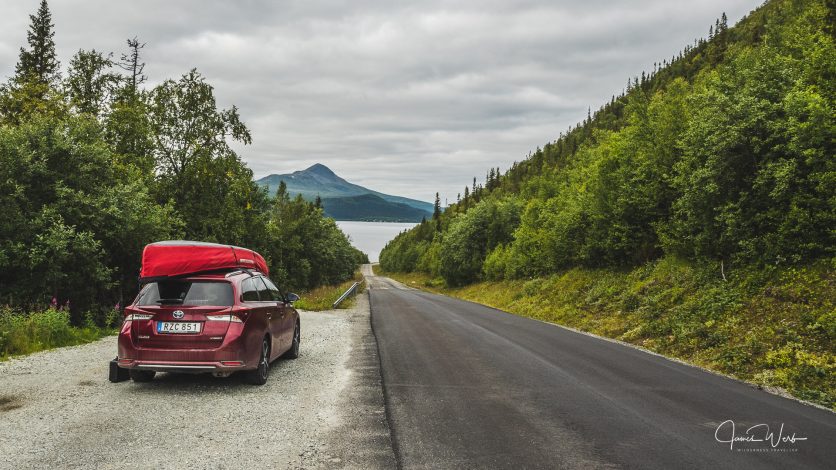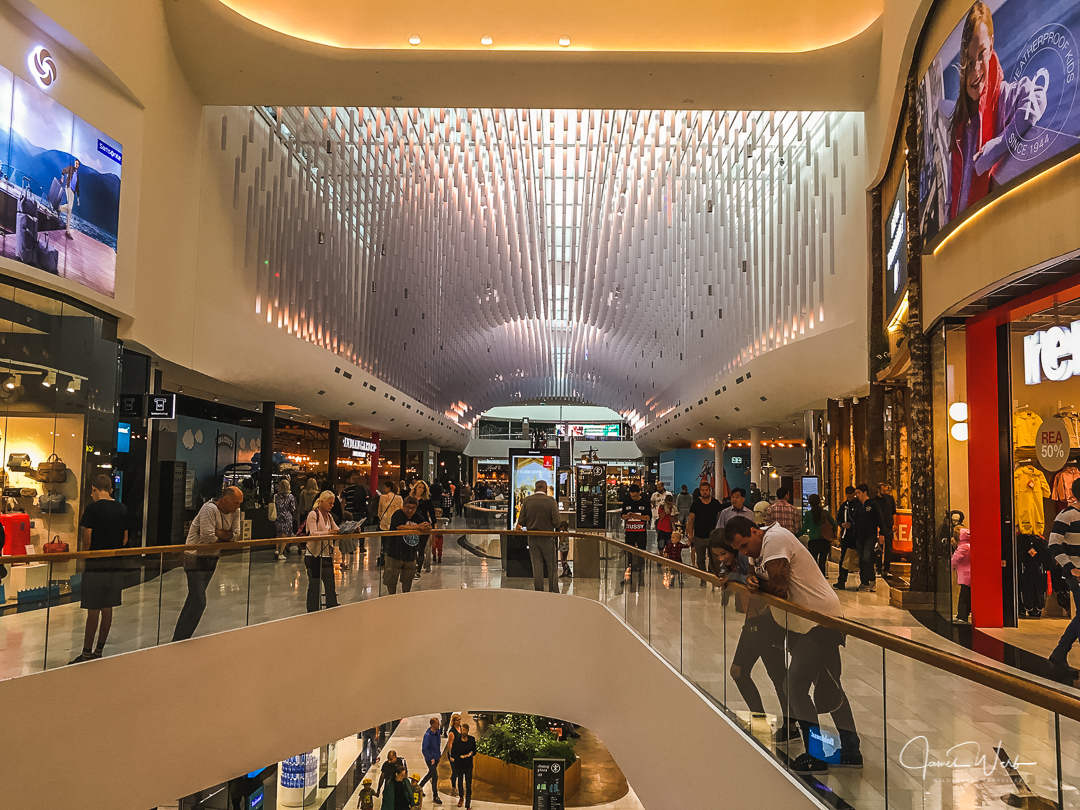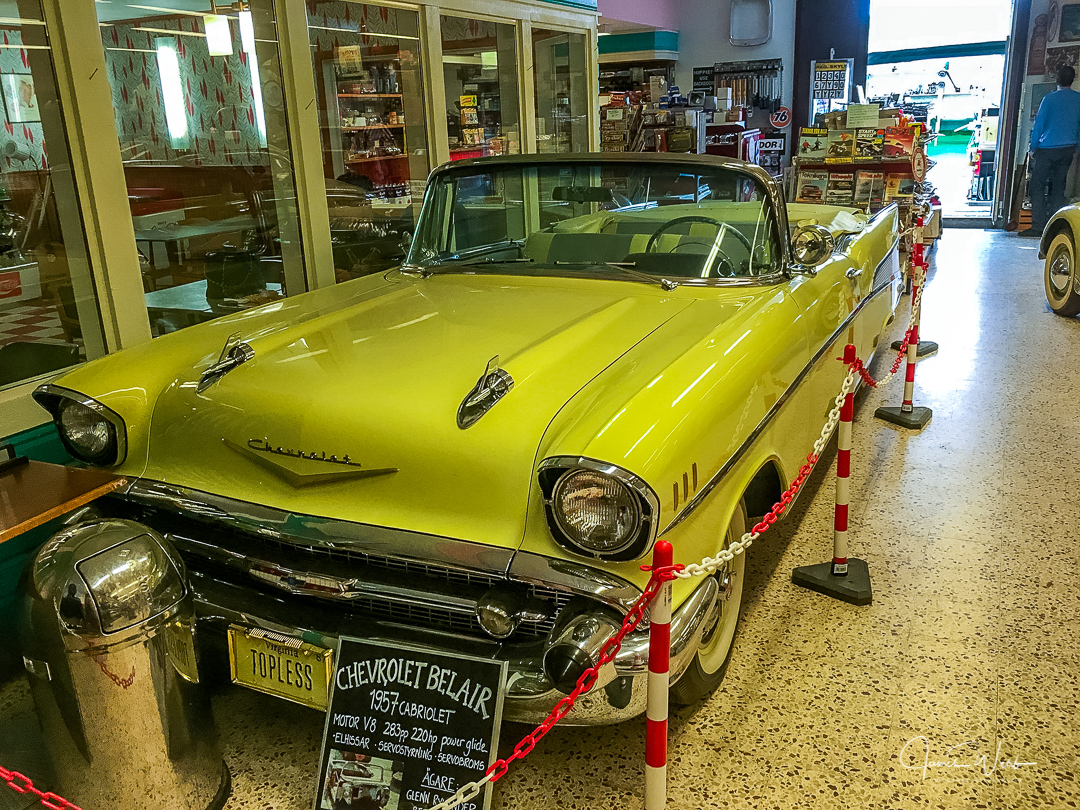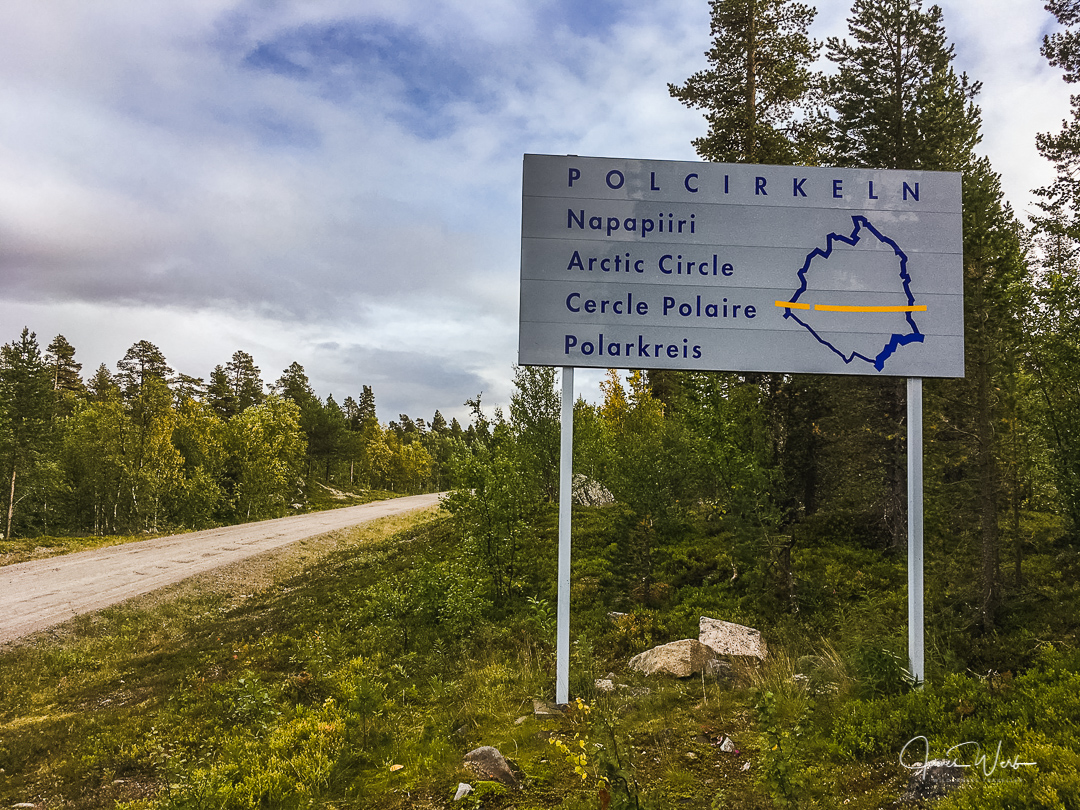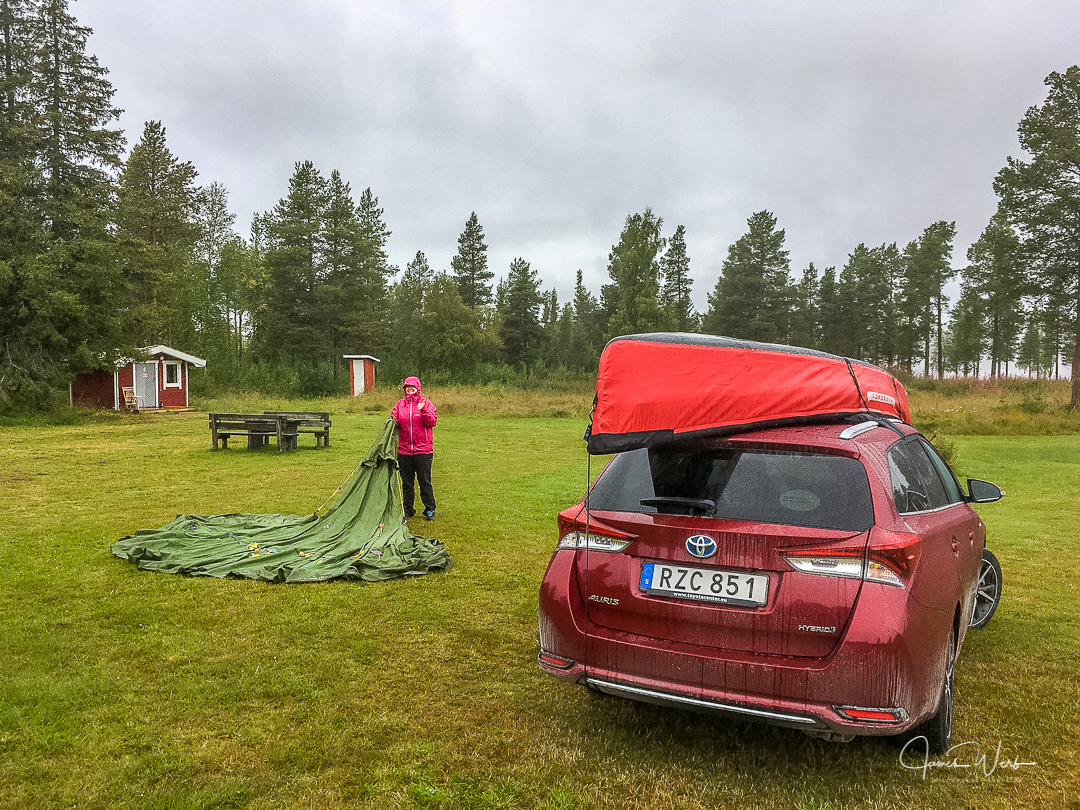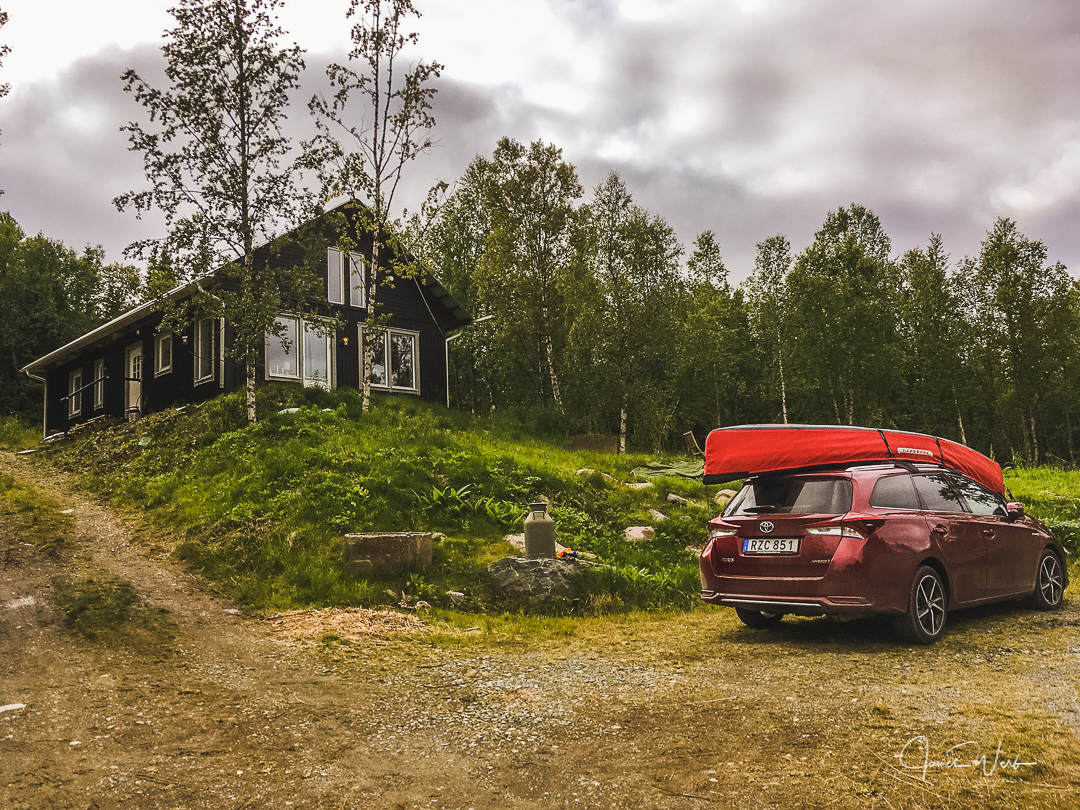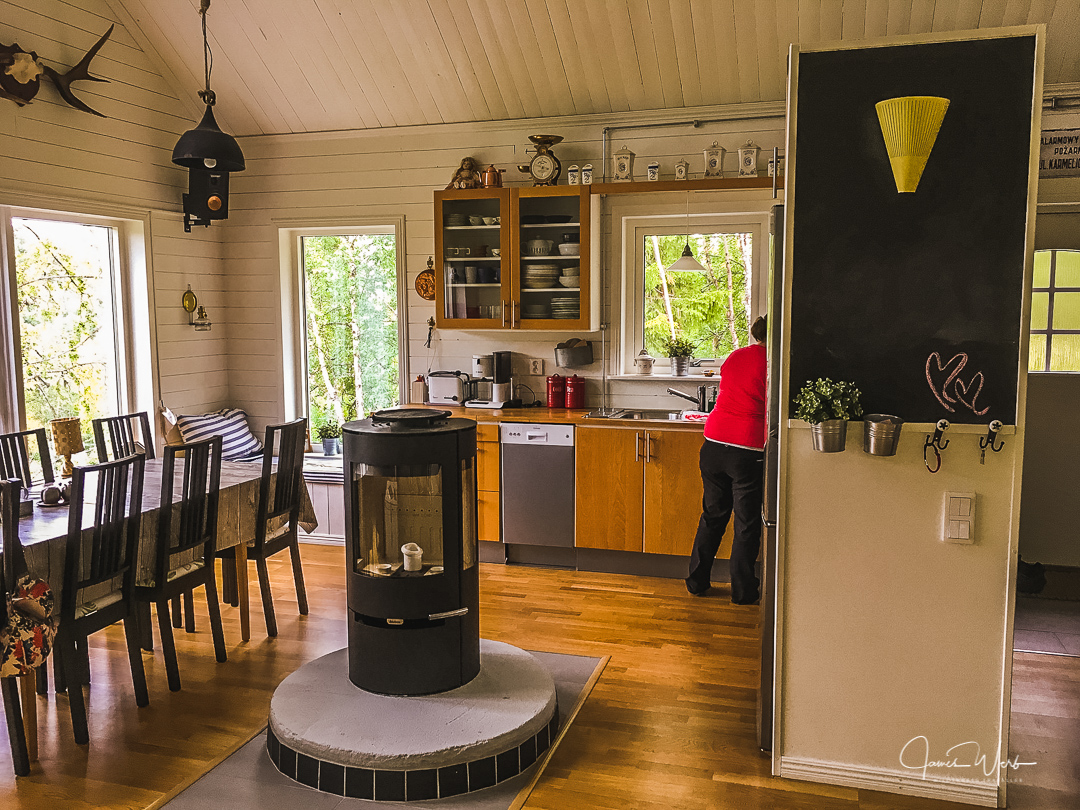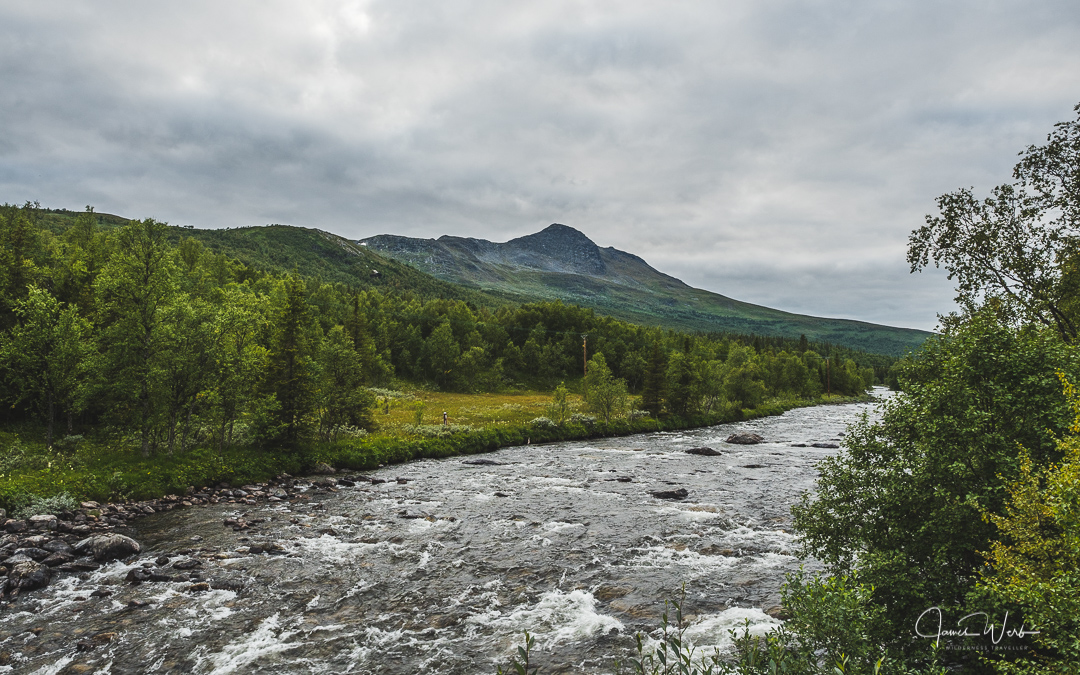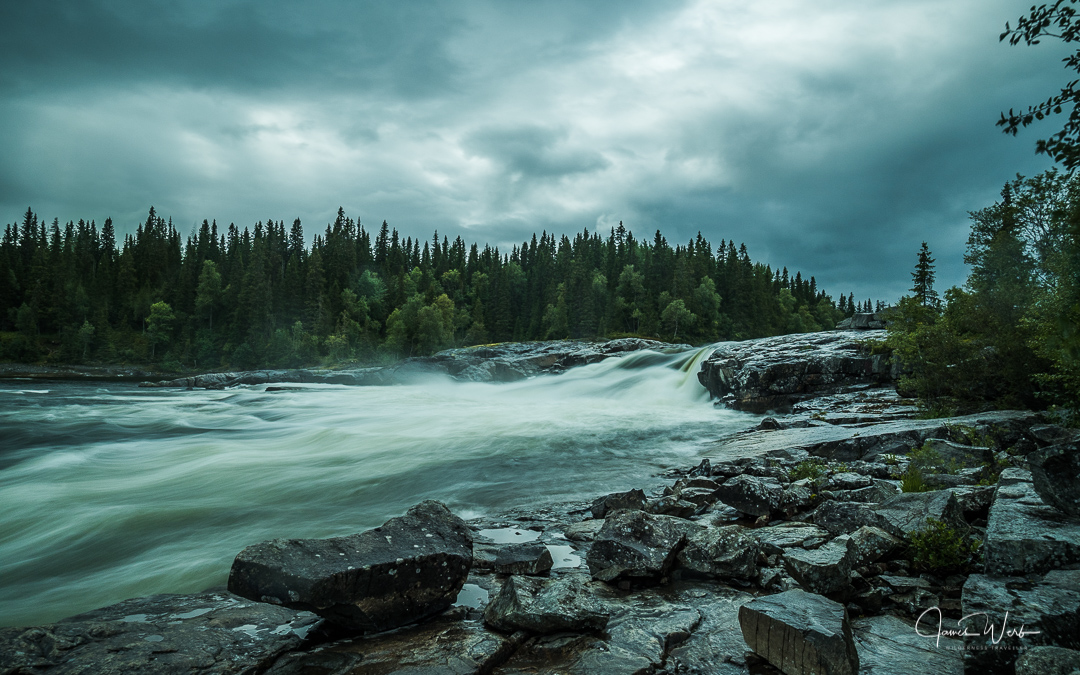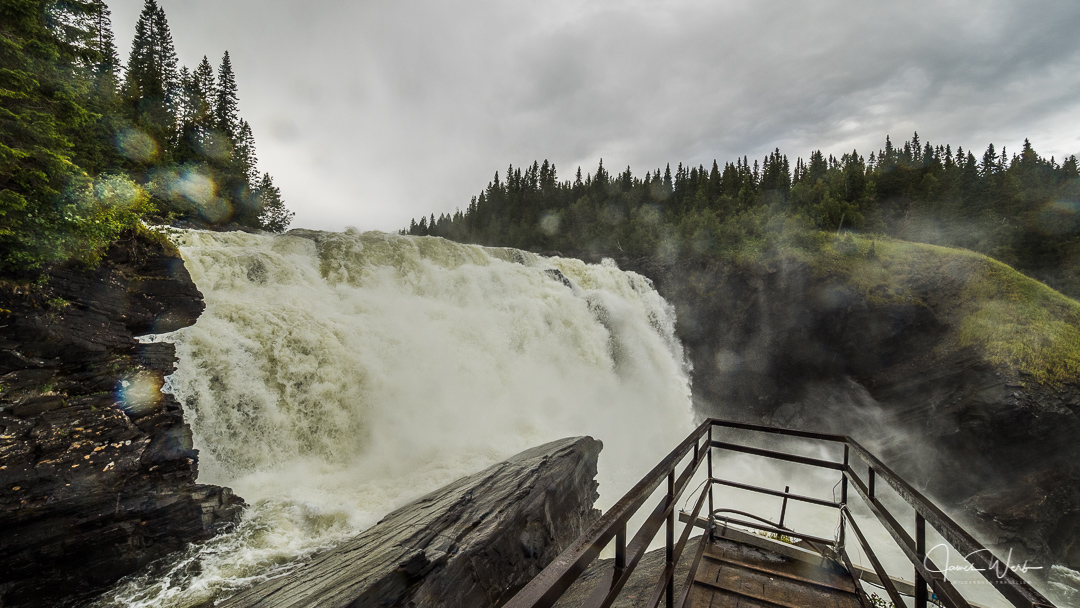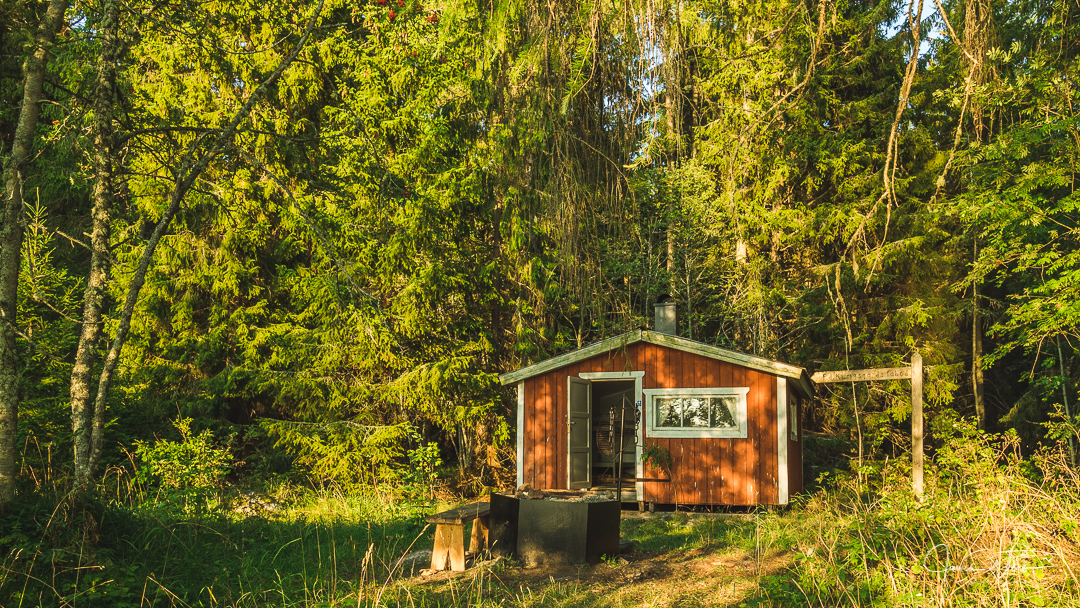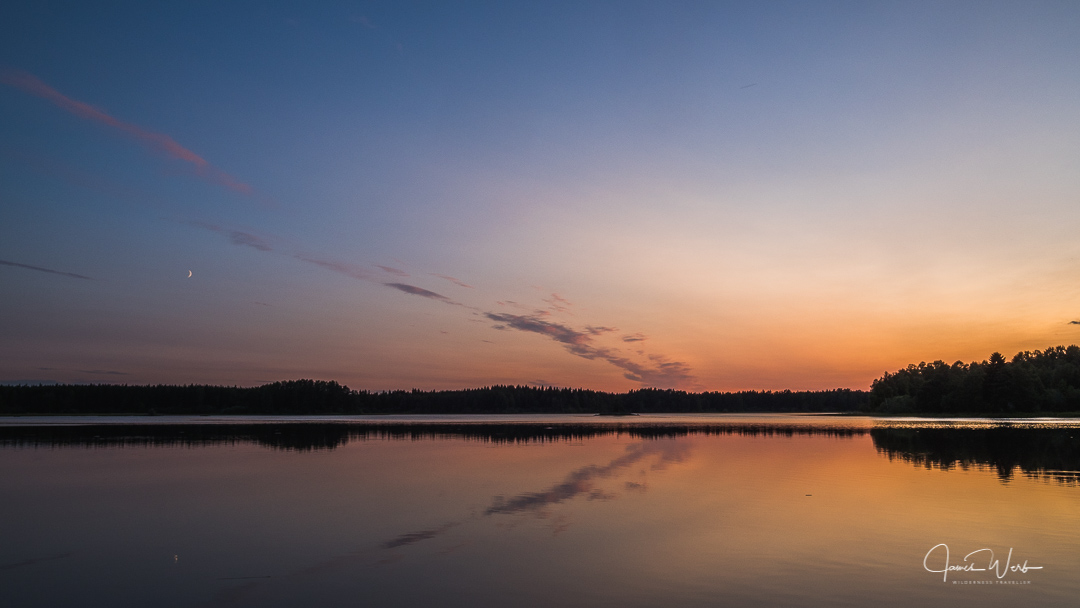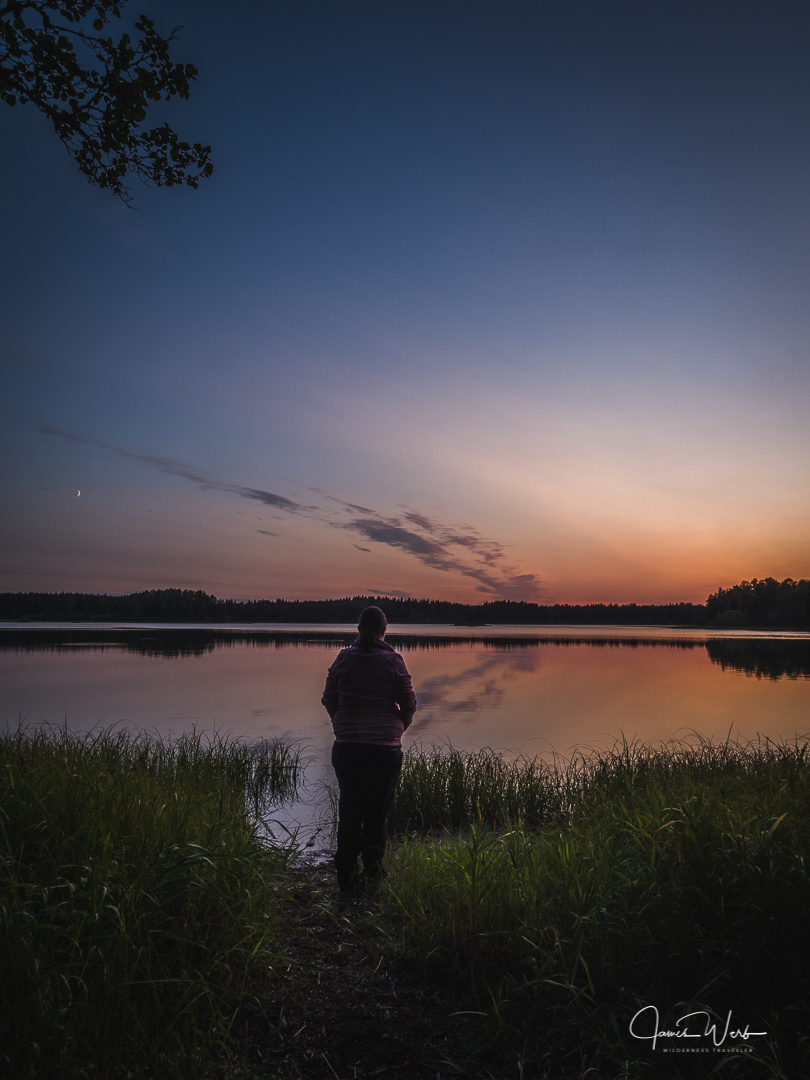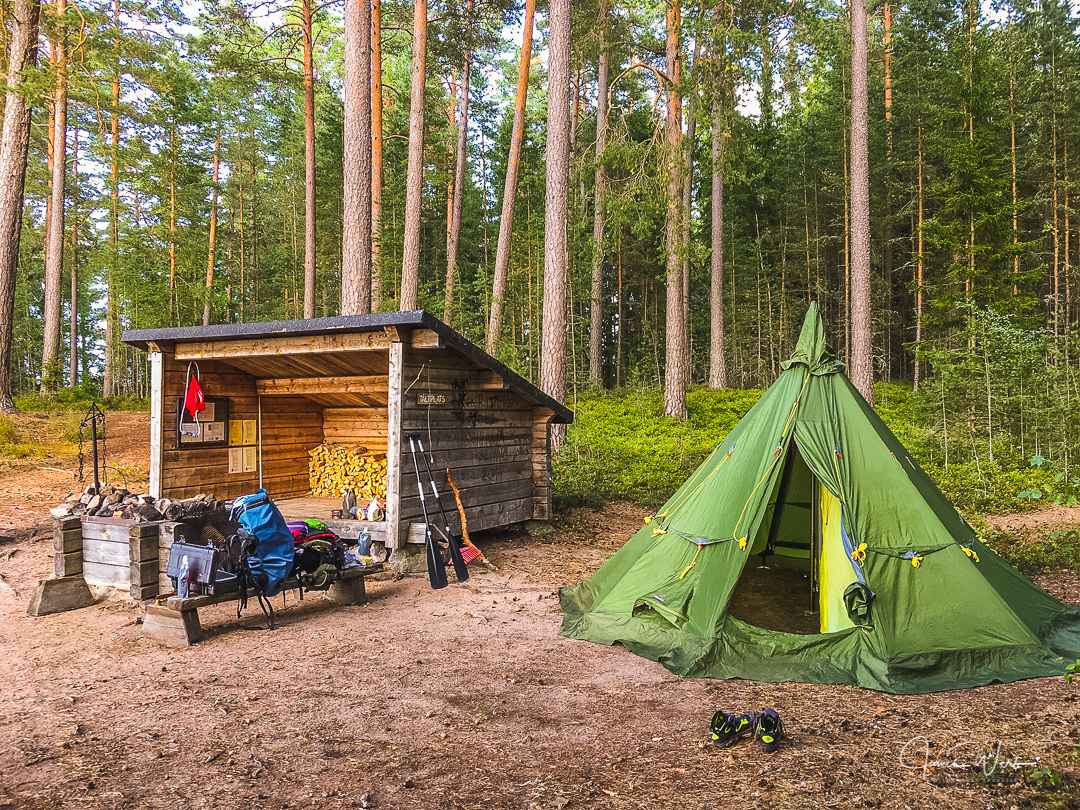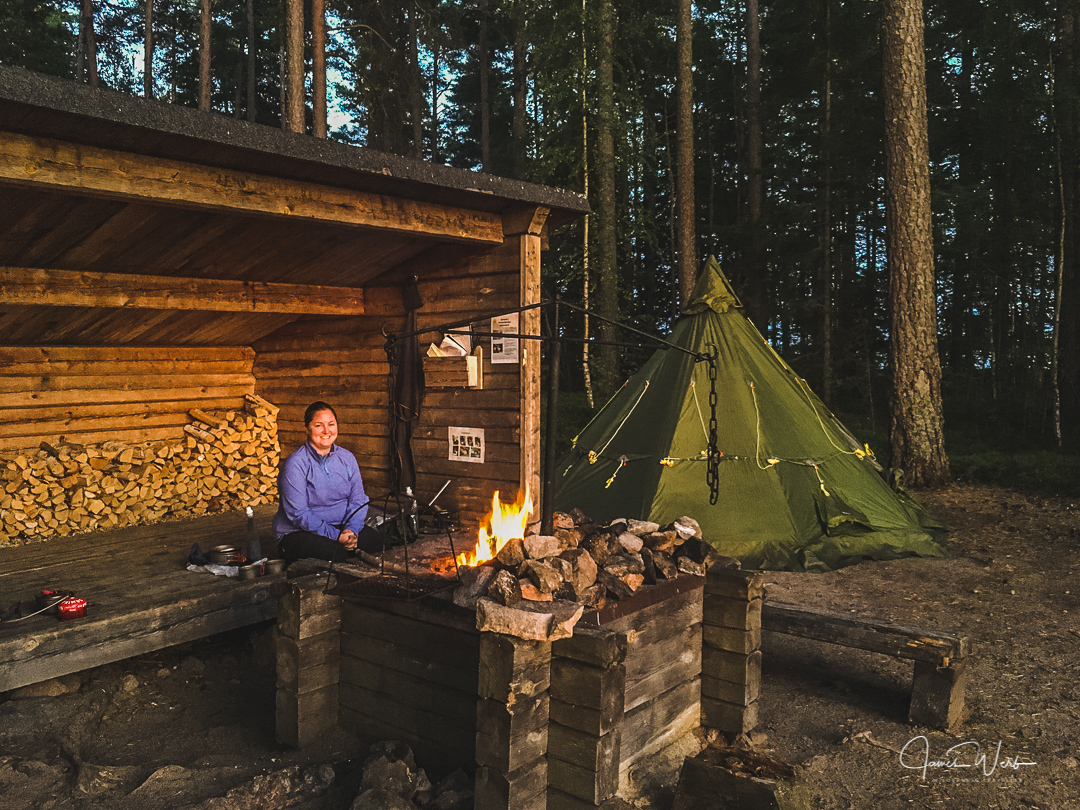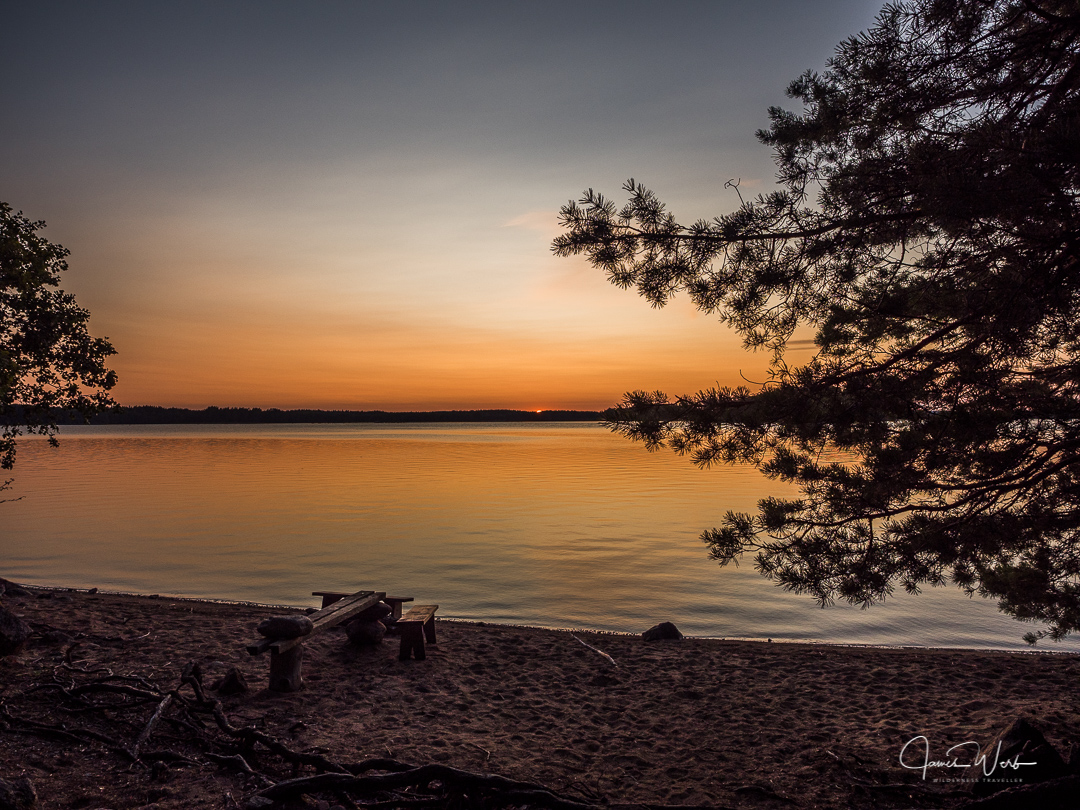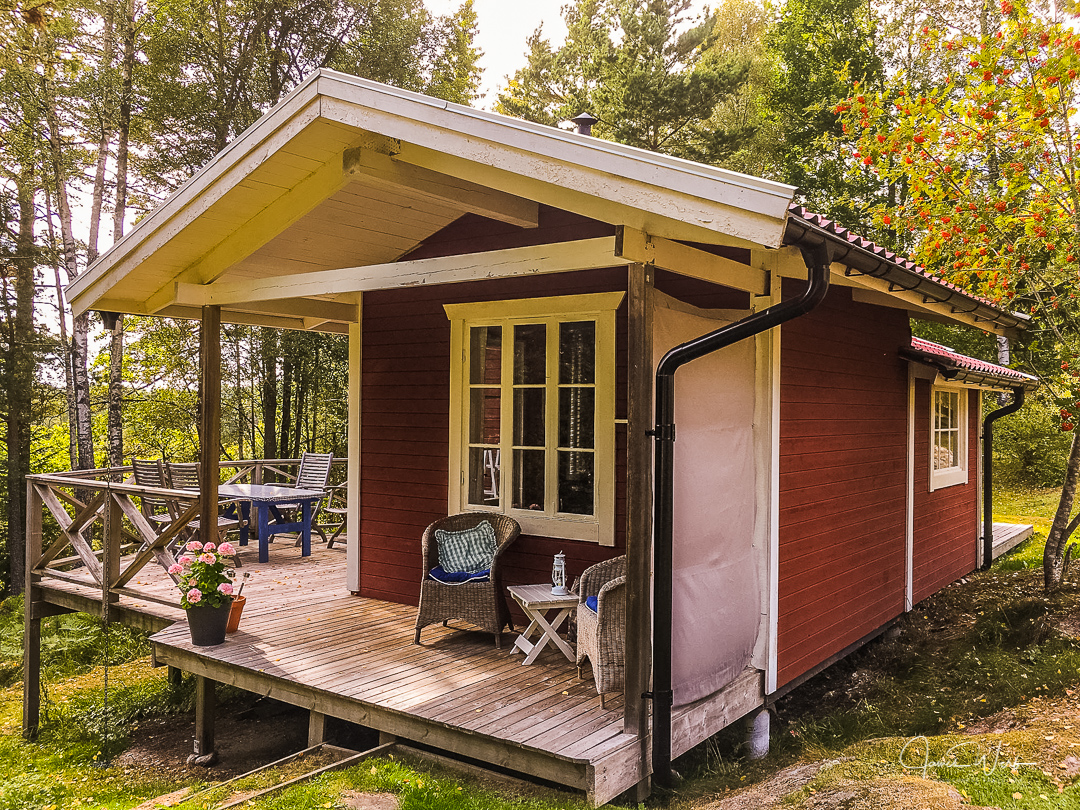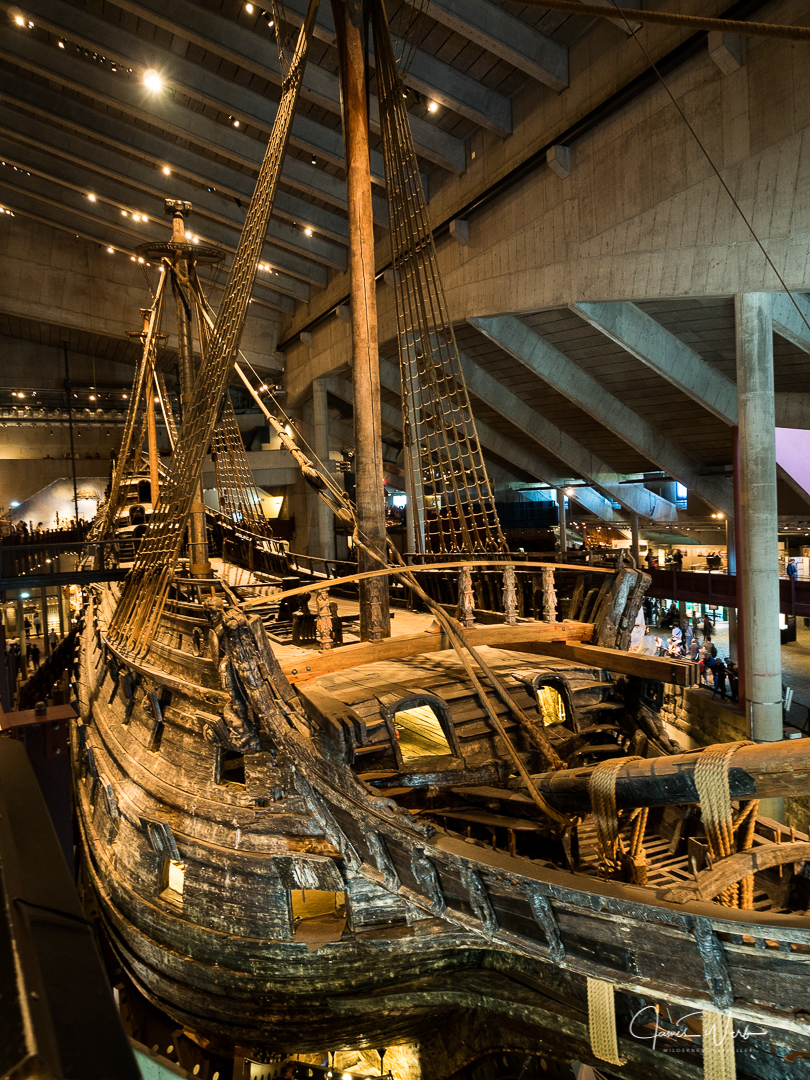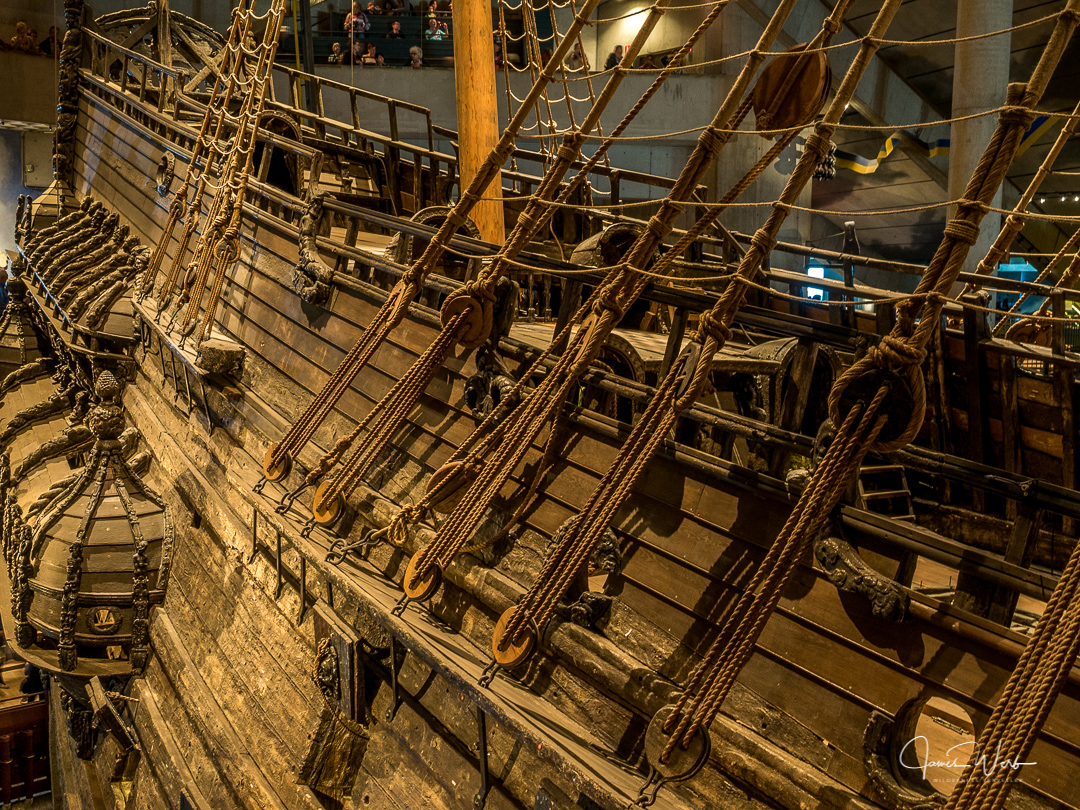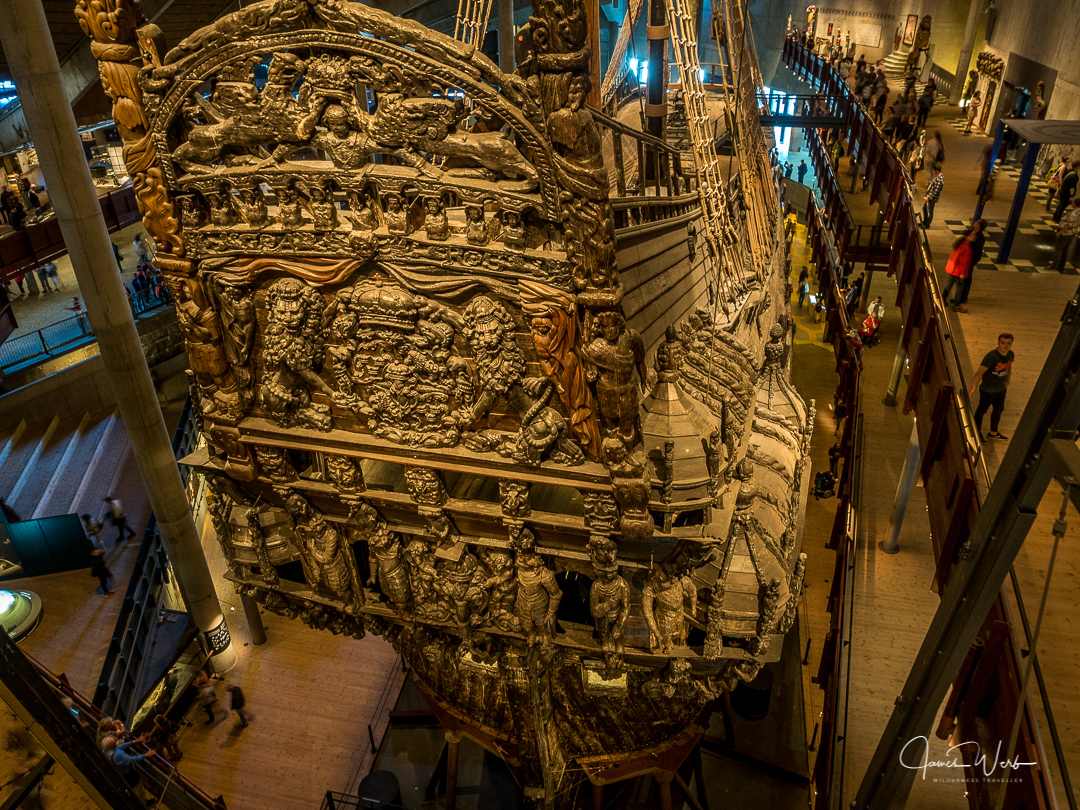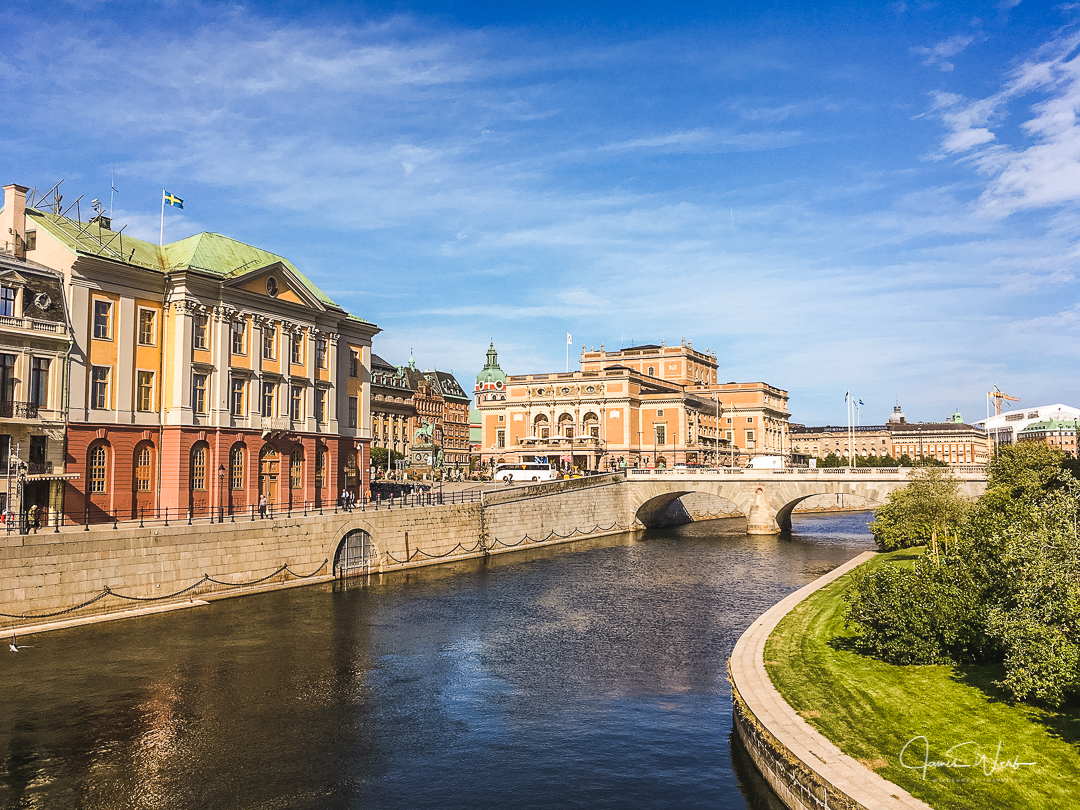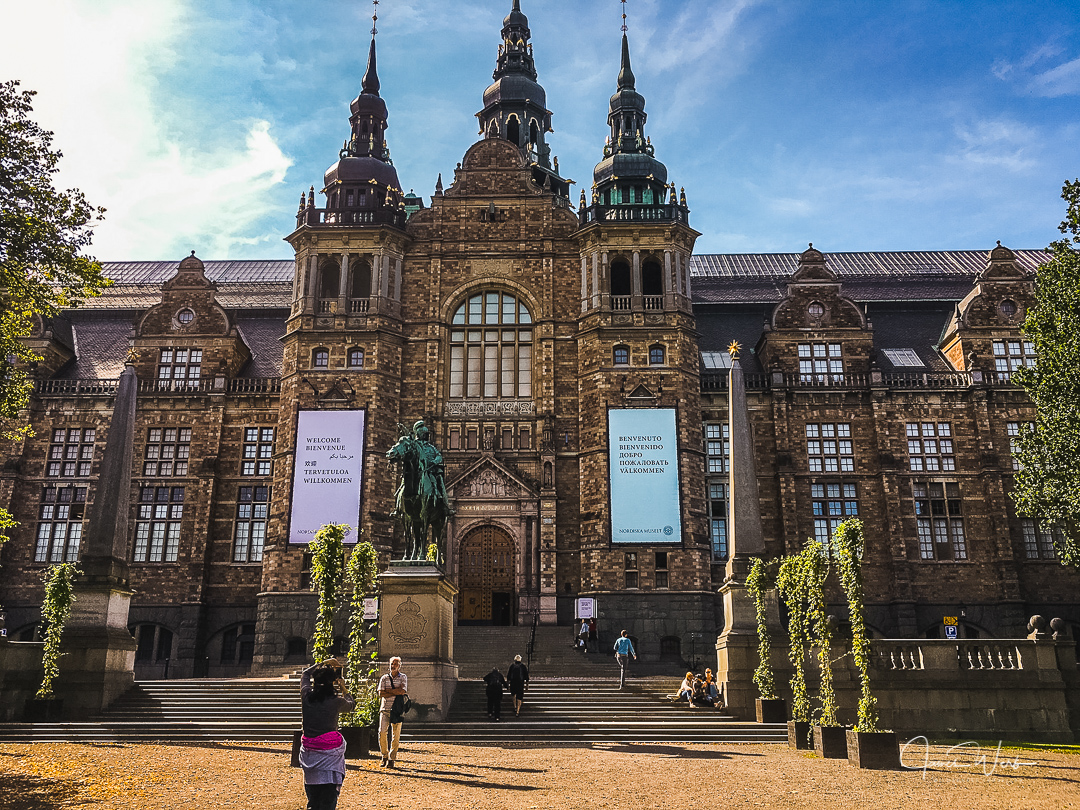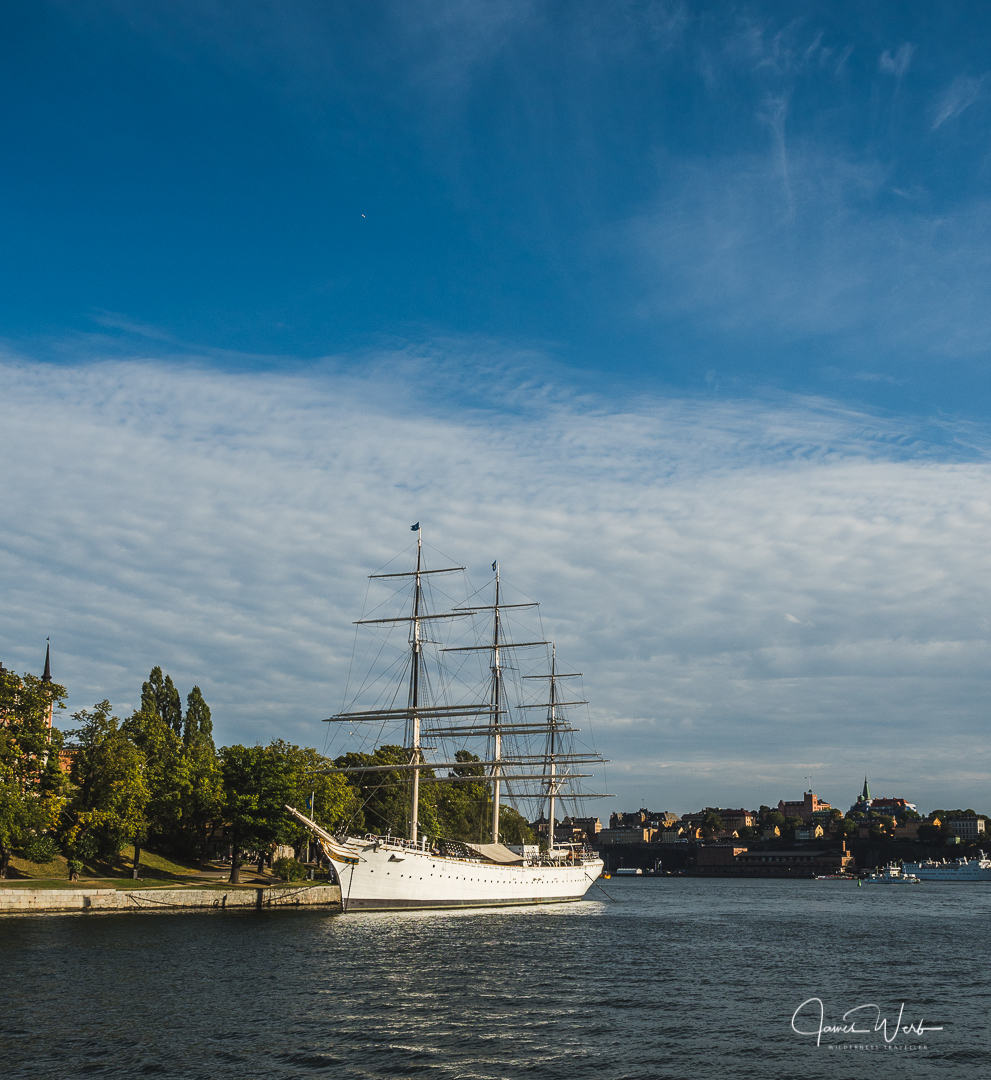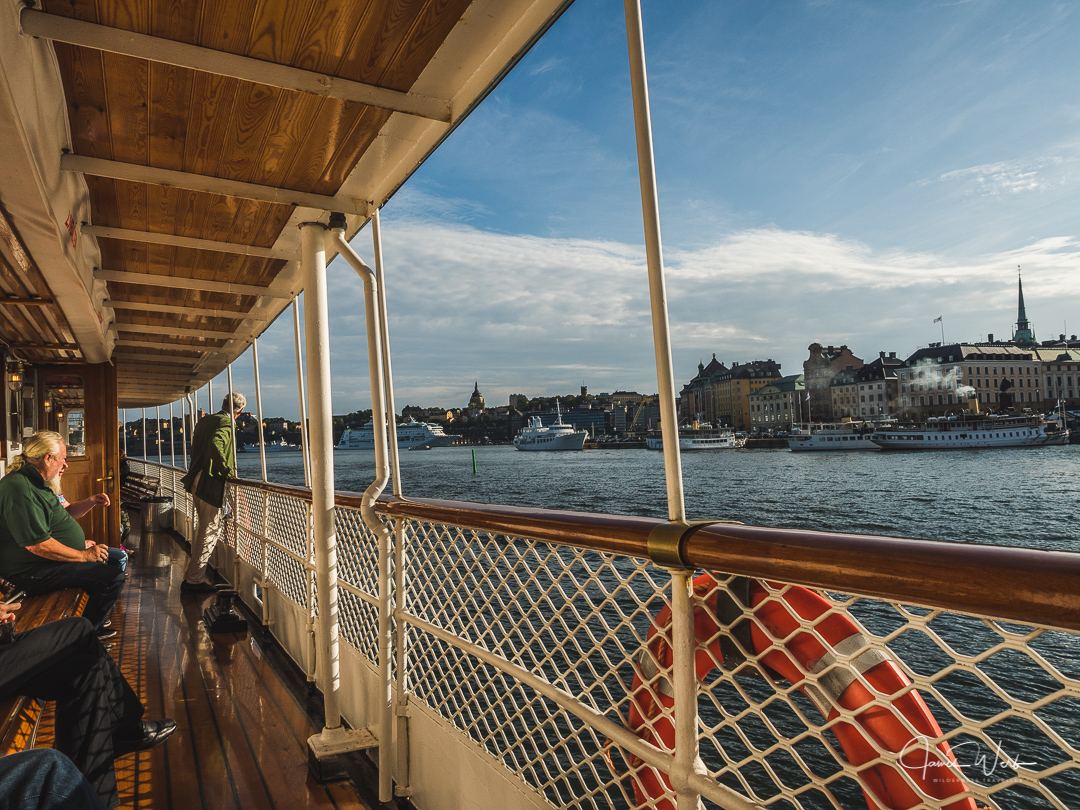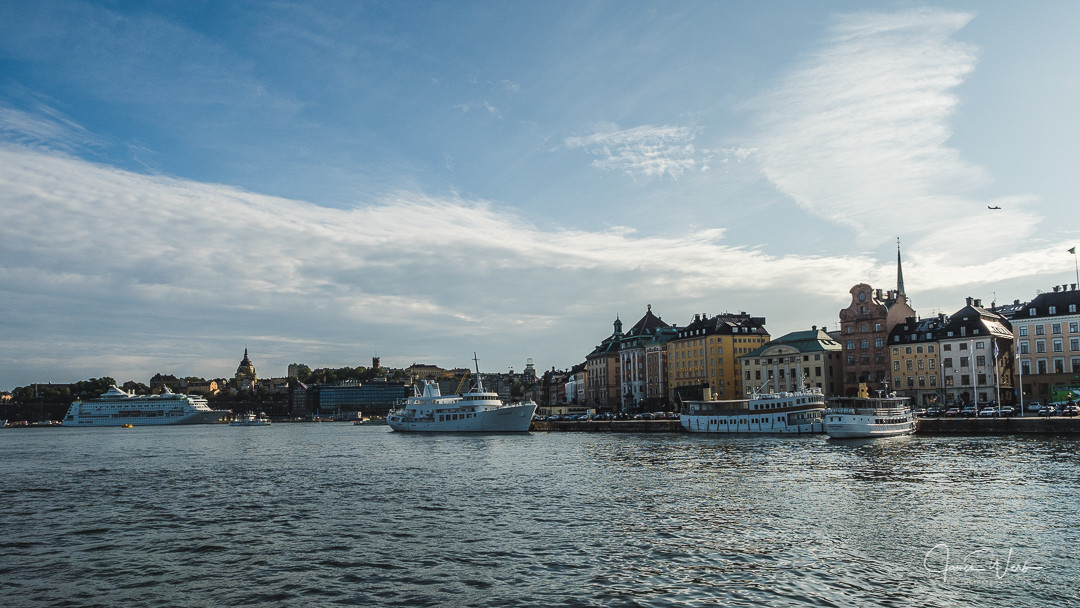Having visited Finland a couple of years ago, we were keen to explore our second Scandinavian country, Sweden. With a total population of about a million more than London, while occupying an area nearly twice the size of the UK it seemed like a good choice for those who like a bit of space.
Combine that with over 280,000 square kilometres of forest, nearly 100,000 lakes and a very enlightened ‘right to roam’ called Allemansrätt and it was time to crack out the folding canoe for another trip.
We arrived at Stockholm airport with a loose plan for the next two weeks. Essentially – drive north – canoe – camp – drive back again.
We’d booked an Airbnb for the first couple of nights. Enough time to get our bearings and stock up on food and essentials for the trip.
We picked up the car, a roomy Toyota Auris estate. It turned out to be a petrol and electric hybrid which hopefully meant that it would be economical. Being almost silent. it meant that I was never sure whether I’d started it or not!
Combined with the fact that I’d never driven on the right-hand side of the road before and we were soon zig-zagging our way out of the car park and squealing onto a (thankfully) relatively quiet road. Marie offered assistance with a mixture of encouragement and panic ranging from “you’re doing very well” to “you still have to give way at roundabouts!”.
Fortunately our home for the night wasn’t far away and Zohaib was soon showing us round his delightful Ikea-built apartment while Marie nursed some mild whiplash injuries.
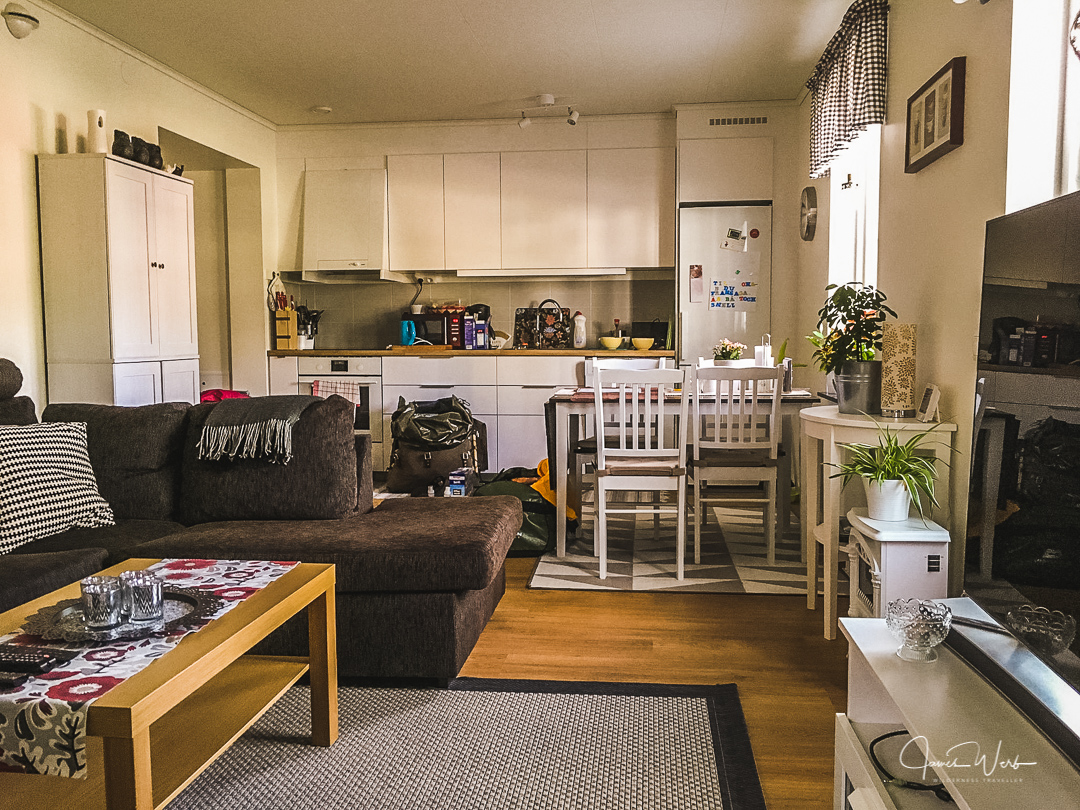
We thanked him very much for letting us stay at his place before I started pouring over the array of tourist leaflets he’d kindly provided.
I couldn’t think of any reason – short of being held at gunpoint – why anyone would want to visit the ABBA museum but apparently over half a million people a year disagree with me. Most must be getting out of the rain (it rains a lot in Sweden), though I admit there must be at least one or two people who actually go there on purpose. I just hope I never meet them.
The following morning we headed out to the Mall of Scandinavia where I’d hoped it would be possible to pick up some fuel for our gas stove (it was), and Marie hoped it would distract me from questioning her about why anyone would build an ABBA museum (it didn’t).
I’m not a big fan of malls and it seemed like most of the 10 million inhabitants of Sweden had gathered inside it. I have to say though, it was exceptionally clean and if you wanted to buy a matching Gucci handbag to go with your shiny new Tesla then it’s the place to be.
I’m not a big fan of malls and it seemed like most of the 10 million inhabitants of Sweden had gathered inside it. I have to say though, it was exceptionally clean and if you wanted to buy a matching Gucci handbag to go with your shiny new Tesla then it’s the place to be.
Back at the apartment we set up our folding canoe in the garden and repacked our bags ready for the drive north the following day.
The plan was to get to a small town called Dorotea in central Sweden where we knew there was a convenient campsite near the main road.
It was also a good halfway point between Stockholm and Arjeplog, where we’d planned to arrive the following day.
The further we headed north the quieter the roads became. Small towns, farms and the occasional garage were interspersed with large sections of coniferous forest and wind-swept lakes.
We stopped for fuel part-way along our seven hour or so drive at a garage which surprisingly doubled as an American diner and classic car museum.
I couldn’t image they got many tourists but it was a welcome spot to stretch our legs and an unlikely diversion that passed ten minutes.
We got to Doro Camp in the early evening. The weather was pretty foul and I don’t think either of us relished putting the tent up.
We opted to stay in a little cabin for the night instead.
Overnight a low mist had descended which didn’t help my haphazard driving style (though I was improving).
It wasn’t shaping up to be ideal canoeing weather either. I watched the temperature in the car gradually but steadily drop – 12 degrees, 10 degrees, 8 degrees. As we continued north it settled on a balmy 6 degrees.
Not quite the sun-soaked destination I had promised but at least even through the gloom it really was a stunningly beautiful landscape. As well as the weather, it also appeared that the roads were quickly deteriorating.
The plan was to get off the beaten track in that respect we seemed quite successful.
At one point the road disappeared completely. Tarmac was already a faint memory but the satnav nevertheless decided to have a little fun and sent us into an abandoned quarry.
The track slowly petered out into vegetation and an impenetrable treeline. I turned the car round and found an alternative route while the satnav gave me a stern telling off for spoiling all its fun.
We drove past a big sign that said we’d reached the Arctic Circle and parked up at the end of the road (I use the term loosely) to find a spot to launch the canoe.
The idea was to paddle out to a nearby island and make camp for the evening.
When we looked out over the lake it was obviously a no-go. Large, rolling waves made crossing to the nearest island far too dangerous to attempt.
The windchill was biting and the gap in the clouds quickly vanished as the first spots of rain started tapping on my head.
We dashed back to the car and limped back to the nearest town of Arjeplog, about an hour and a half away.
At about 6pm we pulled off the road into a small campsite, parted with a modest amount of Swedish Krona and set about erecting the tipi in our wet weather gear.
It was a wet night and our hopes of getting on the lake the next day quickly washed away.
It was still far too windy and the forecast on my phone didn’t paint a particularly rosy picture either. Even the most optimistic of my nine weather apps suggested that Noah would be ill equipped for the amount of rainfall we could look forward to.
We decided to migrate a little further south and headed to the small town of Borkan and another lovely Airbnb tucked away in the hills.
Not far into our drive, down a quiet dirt road lined with pines Marie suddenly exclaimed “reindeer”! Sure enough as I brought the car to rest a small group of reindeer slowly ambled across the road right in front of us. It was a lovely moment.
The landscape changed as we edged closer towards the Norwegian border. Dramatic peaks rose from the lakes, with spots of snow still visible. A change to the lowland we had become used to and a gorgeous spot to set about drying our tent.
The house was lovely and we had it all to ourselves (I could get used to these Airbnb’s). Nestled in the hillside between two lakes, separated by a rocky but fast-flowing river.
We settled in with our stuff as I checked the maps for a suitable place to finally get the canoe in the water.
About five minutes drive the following morning and we were next to the lake and undoing the straps to take the canoe off the roof. The lake looked calm and the rain held out for a good ten minutes while we sorted out our day bag and PFD’s.
We retreated into the car for a while to let another heavy shower pass before we were finally launching the canoe onto the open water.
We rounded the end of the lake after about an hour of paddling and into a more narrow and sheltered section. A few houses lined the edge of the lake though many looked quite dilapidated.
Eventually we reached a barrier across the narrows that couldn’t be crossed so we turned around and started to head back.
The wind started to pick up as we reached the more open water and I felt my hands getting quite cold.
Marie spotted a couple of other small boats on the water in front of us. It looked like they were locals doing a spot of fishing. They headed out into the middle of the lake as we reached the car and the end of our first little foray on the water.
Continuing south, the next day we headed further south to a ski resort called Åre (pronounced “Oura”).
In the guidebook we’d brought with us it looked like a beautiful place to visit with an impressively high ratio of waterfalls.
I don’t think the car had been enjoying our off-road antics in the far north. It told me in no uncertain terms that all safety features would be removed as punishment for my rough treatment. “And don’t expect to use the lights either” it exclaimed with an ironic LED display on the dashboard.
A quick call to Hertz didn’t shed any light on the matter either. As the lights still seemed to be functioning perfectly and I didn’t want to test the anti-collision detection system (or whatever it was called) we decided to push on and take our chances.
Now Åre is the sort of place that I imagine doubles in population during the winter.
It was geared up for every winter sport imaginable with ski slopes in all directions and every other shop selling all the paraphernalia for such activities.
We settled into another Airbnb and took a long walk through the town and down to Tegefors waterfall.
Probably the driest day we’d experienced so far but still bitingly nippy. After we reached the edge of town we passed large meadows as the trail meandered in and out of the woods.
After a couple of hours we could hear the distinct sound of rushing water.
The waterfall appeared through the trees and nearby was a convenient wooden shelter which provided the perfect place to stop for lunch.
Just in time it turned out as the clouds moved in and raindrops started to beat down rapidly on the timber roof. It was a great spot and the sky made the scene even more dramatic.
I dashed out during a break in the rain to take a photo before retreating back under cover.
This was to become ‘waterfall day’. Once back at the car we took a short drive to visit the spectacular Tännforsen waterfall advertised as being the largest in Sweden.
We pulled up at the small car park and visitor center-come-gift shop before taking the short stroll through the woods to reach it.
There was no mistaking the rumble getting louder and louder until we emerged from the trees and there it was.
It was a spectacular sight, frothing and roaring, as thousands of gallons of water spewed over the rock and tumbled dramatically towards the lake below.
A small viewing platform provided an incredible vantage point and was about as close as I wanted to get to it.
Spray filled the air and I was glad to have my waterproof jacket on.
The surrounding forest was also alive with various fungi and rare mosses that love the damp atmosphere provided by the spectacle.
The next day we decided to head further south to chase what promised to be good weather.
Our sights were set on Färnebofjärden National Park, a 10,000 hectare reserve about 2 hours north of Stockholm with plenty of places to float a canoe.
We got to the park about 4pm and made our way down increasingly small dirt tracks to try and find a cabin for the night.
Marie spotted a small signpost pointing at the cabin 1km off into the woods so we pulled up and headed off through the trees.
It was a lovely evening and after a wonderful stroll through the woods we arrived at a little red cabin replete with a well-built fire pit outside.
We brought our bags over and started setting up for the evening. The cabin was free to use, basically like a Scottish bothy. It had a wood burning stove, table and chairs as well as two sets of bunk beds.
There was also huge stacks of wood inside, perfect for an evening fire.
We cooked up our dinner over the gas stove and sat watching as the sun set over the trees across the lake.
The next morning we packed up early and carried our stuff back to the car.
When we hit a much more reasonable road surface and I started to pick up speed, Marie yelled “something fell off the roof!” I quickly stopped the car and ran back down the road to find out what it was. I thought maybe part of the canoe had come loose.
In the ditch to the side of the road lay a red, and rather limp water bladder. “Bugger, I must have left it on the roof”. I wandered slowly back to the car and held up what was left of it.
A careless error but fortunately not a major problem, though it was a sad moment, lamenting the end of a very reliable and well-traveled piece of equipment that had joined us on many trips over the years.
Still, onwards and upwards. Literally in this case. The park map that we’d stopped to pick up from the visitor centre showed that there was a walk up to a tall viewing platform.
As it was a lovely day we decided it would be good to get a panoramic view of our surroundings.
It was an impressive wooden tower and climbing the steps top it made me feel that perhaps I’m not as fit as I thought.
The view was definitely worth it. A 360 degree panorama over the national park. The sun was shining and the conifers were gently swaying in the breeze as birds chirped and hopped from branch to branch.
After lunch on a wooden bench by the lake we headed off again to find our next camp spot for the night.
The park had designated places where you could camp for the night, two of which were on islands in the lake.
Our plan was to canoe out to one of the islands for the night. The wind had picked up a bit and crossing any distance on the lake was clearly a no-go. We drove round to the closest point we could get to the island, parked up, loaded the canoe and headed out onto the water.
The island was only about 500m from the shore but as we left the shelter of the bay the waves started to grow. It was a slightly bottom-clenching crossing but we paddled quickly and soon made it to the bank of the island.
We tied the canoe up to a tree and went out to explore the island and find the camp spot.
I think we walked around most of the island before we found a wooden shelter and fire pit on the other side. We ambled back to the canoe and paddled it round to the beach (while hugging the shore) in front of the shelter.
The tipi was quickly erected next to the shelter and while Marie set out our sleeping gear I started filtering some water, having lost our previous supply off the roof.
It was a great arrangement and very similar to the sites we found while canoeing around Lake Saimaa in Finland.
Huge piles of wood were available and a sturdy fire pit meant only one thing – another fire.
A family pulled up in little dinghy with an outboard motor on the opposite side of the island. We could hear them and every so often see them through the trees.
As the sun started to fade, we sat in the shelter watching the flames of the fire dance around while the water gently lapped against the sandy shore.
The sky turned gently from blue to orange as the fiery ball gradually disappeared over the horizon. The fire gave off a gentle glow as it too faded into the night and we went to bed.
I checked my phone the following morning to see what the wind was going to be doing. I’d hoped it would sod off completely but I’d settle for a change of direction.
Our luck was in! It looked calm and and the wind wasn’t due to pick up until the afternoon, by which point we’d be camping back on the mainland.
We had breakfast and packed the tent away, after getting dressed I should add.
The 500m paddle back to the car was fortunately less dramatic than the outward journey and we were soon back on dry land before the wind picked up again.
We stayed on a lovely, quiet campsite nearby and sat in the sun watching the world go by.
The conditions which weren’t great for canoeing turned out to be perfect for windsurfing as a guy in a campervan nearby demonstrated.
As it wasn’t looking likely that we’d be using the canoe again, we decided to dismantle it while the weather was dry.
Our last couple of days we spent exploring Stockholm. We stayed in a beautiful little cabin on the Island of Ljusterö, the largest in the Stockholm archipelago.
Stockholm itself is quite pretty as cities go and the Vasa Museum was fascinating.
The Vasa was a warship that capsized and sank in 1628 that was salvaged 333 years later in incredible condition.
I couldn’t help but feel that if the builders had spent a little less time carving beautiful figurines around the ship and more time making sure it could actually float, its maiden voyage would have been much more successful.
That said, I was thankful they didn’t as otherwise I may have ended up at the ABBA Museum instead, and no-one wants that.
Share this Post

